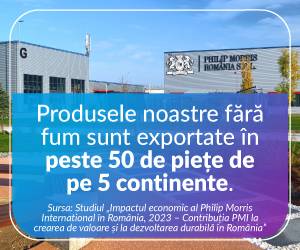• EU Harvest Decline
The European Union is heading for a smaller corn harvest this year after drought and heatwaves devastated crops in Romania and neighboring countries, according to analysts interviewed by Reuters. A smaller production could make the bloc, already a net corn importer, even more dependent on external suppliers this season, especially since the EU expects to harvest smaller quantities of wheat and barley, which can be used as animal feed, like corn. Forecasting bodies have significantly revised their estimates for the EU corn harvest down to 60-61 million tons, below last year's harvest of 63 million tons but above the 2022 harvest of 53 million tons when Europe was hit by an extensive drought. "The situation in Eastern Europe is very serious, just like two years ago. Western Europe is fine, and that will save the situation compared to 2022," said Maxence Devillers, an analyst at Argus. Romania, which previously competed with France for the title of the largest corn producer in the EU, has been hit by numerous waves of drought and heatwaves that have also affected corn crops in Ukraine and Russia. Some analysts expect Romania's corn harvest to drop by about 30% compared to the nearly 11 million tons recorded last year, with Argus analysts predicting a production of 7.5 million tons this year, while the Romanian firm AgroBrane estimates a production of 7.7 million tons. "It's a challenge to grow corn in an oven," said Gabriel Razi of AgroBrane, noting that corn crops faced temperatures of 40 degrees Celsius in July. "It's one of the most challenging seasons Romanian farmers have faced," Gabriel Razi added during a webinar organized by the Trend&Hedge Club. In contrast, favorable moisture levels in France provide better conditions. Moreover, an increase in corn-planted areas could allow France to record a better harvest this year compared to last year. "In France, the situation is mixed, but production should be good," estimated Maxence Devillers, who expects a harvest of over 14 million tons, slightly above the initial estimates of the French Ministry of Agriculture. The drought has affected 2.5 million hectares in our country, about 40% of wheat, corn, rapeseed, and sunflower crops. According to experts in the field, losses amount to 1.5-1.8 billion euros.
• Chaotic Weather Leaves Us Without Fruit
This year's unusually wet spring and chaotic summer conditions have caused farmers from Poland to the United Kingdom to worry about the size and quality of their crops, while the southern part of the continent is again struggling with severe drought. The EU apple harvest is expected to shrink by a tenth, a strawberry shortage is driving prices up in some regions, and Italy is having trouble harvesting enough olives to produce the oil it needs. These events are further evidence of the challenges posed by extreme weather phenomena, with ramifications that may last for several years. Poland, the continent's largest apple producer, could see a 30% reduction in total production this year compared to last year, according to the Union of Polish Fruit Growers. Mild weather at the beginning of the year led to faster-than-usual budding of trees, but the buds were damaged by April's frost, so many will not bear fruit. The European Commission has proposed mobilizing 62 million euros from the EU reserve to help Poland, the Czech Republic, and Austria, which have suffered from unfavorable weather conditions. The spring frost also affected Germany, exacerbating other issues such as the reduction of arable land. The 2024 strawberry harvest is projected to be about a quarter smaller than last year's, and consumer prices have risen by 4% in the first six months. Additionally, Germany's famous asparagus crops were also hit. Some winemakers and fruit growers have lost their entire crop, leaving them with nothing to sell to retailers. Although German farmers were not included in the European Commission's initial support package, they are now being considered. The Puglia region, in the heel of Italy's boot, has faced severe drought and temperatures of up to 43 degrees Celsius, affecting fruits and vegetables. Olive oil production, the region's main product, is expected to reduce by over 50%. Wheat production for bread and pasta has also halved due to the prolonged drought. With above-average temperatures expected to persist in the coming weeks, the situation could worsen for farmers in Italy's main agricultural areas. Spain has also suffered from drought in recent years, with local press estimating that mango production will collapse this year.
• Great Droughts
One of the most devastating droughts to affect Europe occurred in 1540, known as the "Great Drought." It lasted almost an entire year, with very little rainfall and extremely high temperatures for that period. The water crisis had disastrous consequences: rivers dried up, crops were destroyed, and famine and diseases struck populations across Europe. Historical records describe scenes of despair, with people and animals dying of thirst, and uncontrolled wildfires spreading.
The drought of 1921 particularly affected Eastern Europe and Russia, having a devastating impact on the region. This severe drought coincided with the period after World War I, when many countries were struggling to rebuild. In Russia, the drought contributed to a large-scale famine, known as the "Russian Famine of 1921," which led to the deaths of millions. The drought-affected regions could not produce enough food, and the Soviet government was forced to seek international aid to cope with the humanitarian crisis.
In the summer of 2003, Europe was hit by one of the most severe droughts in its recent history. This drought was accompanied by an extreme heatwave, which caused the deaths of approximately 70,000 people across Europe. Temperatures reached historic records in several countries, and the lack of rainfall led to a drastic drop in groundwater and river levels. Agriculture suffered massive losses, and many crops were compromised. Additionally, the drought led to an increase in forest fires, especially in southern Europe, where thousands of hectares of forest were destroyed.
The drought of 2018 is considered one of the most severe in recent decades and was a clear signal of the effects of climate change. This drought affected large parts of Northern and Central Europe, including Germany, Sweden, and the United Kingdom. Scorching summers and a lack of rainfall led to a dramatic decrease in crop yields and severe water use restrictions in several regions. The drought also affected navigation on major rivers such as the Rhine, where water levels dropped to record lows, disrupting transportation and the economy.
Droughts in Europe are caused by a combination of natural and anthropogenic factors. Climate change plays a major role in amplifying the frequency and intensity of droughts by increasing global temperatures and altering precipitation patterns. Additionally, human activities such as deforestation, intensive agriculture, and inadequate water resource management contribute to the worsening of droughts. The impact of droughts on Europe is vast and diverse. In addition to agricultural and economic losses, droughts lead to soil degradation, reduced biodiversity, and lower water quality. Droughts also contribute to an increased risk of wildfires and the loss of natural habitats. Socially, droughts cause migrations, food price increases, and conflicts over water resources.
Droughts have been and remain a major threat to Europe, and their frequency and severity are increasing due to climate change. In the face of these challenges, it is essential for Europe to invest in adaptation solutions and sustainable water resource management to reduce the impact of future droughts on the economy and society.




















































